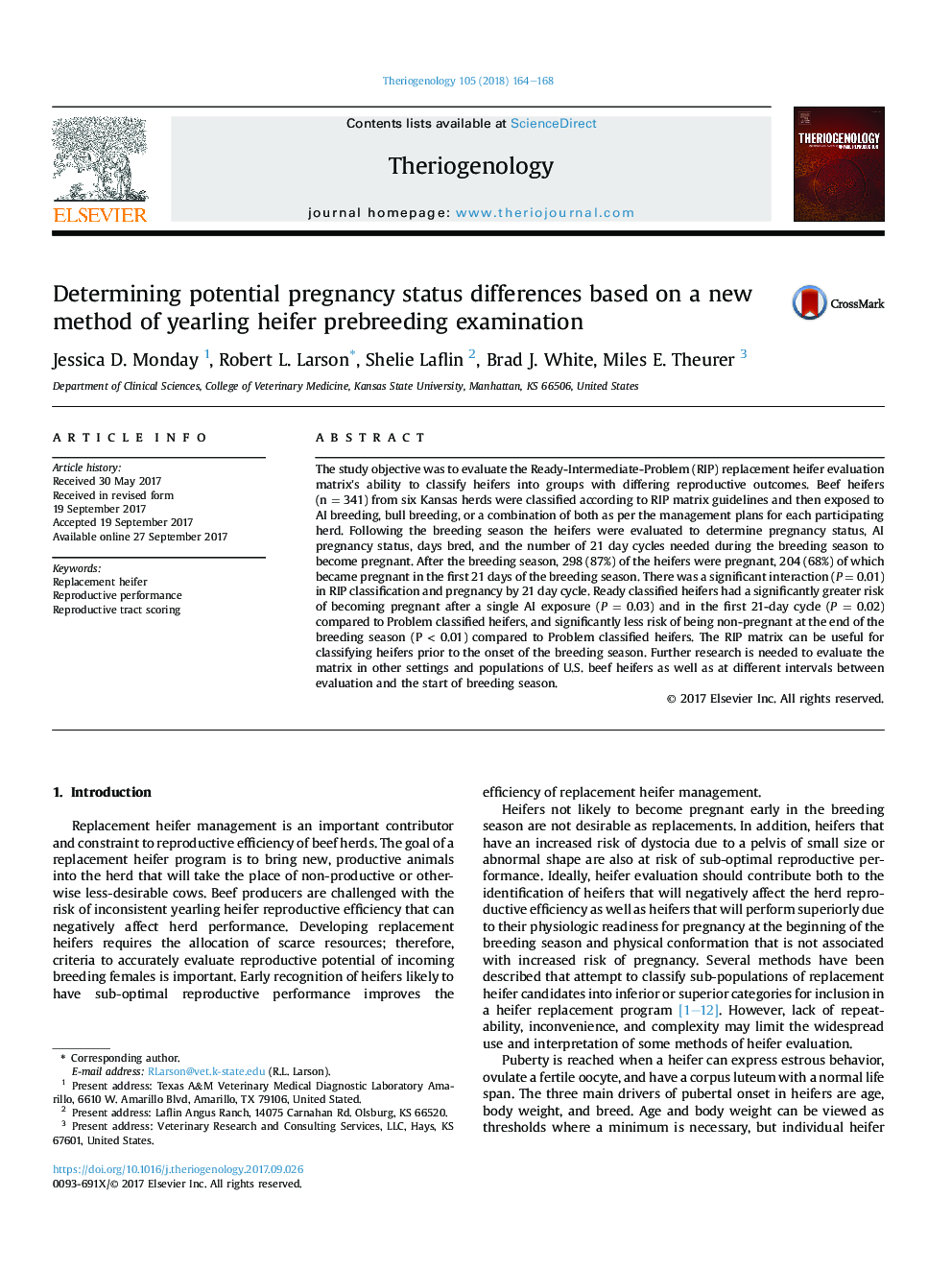| کد مقاله | کد نشریه | سال انتشار | مقاله انگلیسی | نسخه تمام متن |
|---|---|---|---|---|
| 5523029 | 1546064 | 2018 | 5 صفحه PDF | دانلود رایگان |
The study objective was to evaluate the Ready-Intermediate-Problem (RIP) replacement heifer evaluation matrix's ability to classify heifers into groups with differing reproductive outcomes. Beef heifers (n = 341) from six Kansas herds were classified according to RIP matrix guidelines and then exposed to AI breeding, bull breeding, or a combination of both as per the management plans for each participating herd. Following the breeding season the heifers were evaluated to determine pregnancy status, AI pregnancy status, days bred, and the number of 21 day cycles needed during the breeding season to become pregnant. After the breeding season, 298 (87%) of the heifers were pregnant, 204 (68%) of which became pregnant in the first 21 days of the breeding season. There was a significant interaction (P = 0.01) in RIP classification and pregnancy by 21 day cycle. Ready classified heifers had a significantly greater risk of becoming pregnant after a single AI exposure (P = 0.03) and in the first 21-day cycle (P = 0.02) compared to Problem classified heifers, and significantly less risk of being non-pregnant at the end of the breeding season (P < 0.01) compared to Problem classified heifers. The RIP matrix can be useful for classifying heifers prior to the onset of the breeding season. Further research is needed to evaluate the matrix in other settings and populations of U.S. beef heifers as well as at different intervals between evaluation and the start of breeding season.
Journal: Theriogenology - Volume 105, 1 January 2018, Pages 164-168
